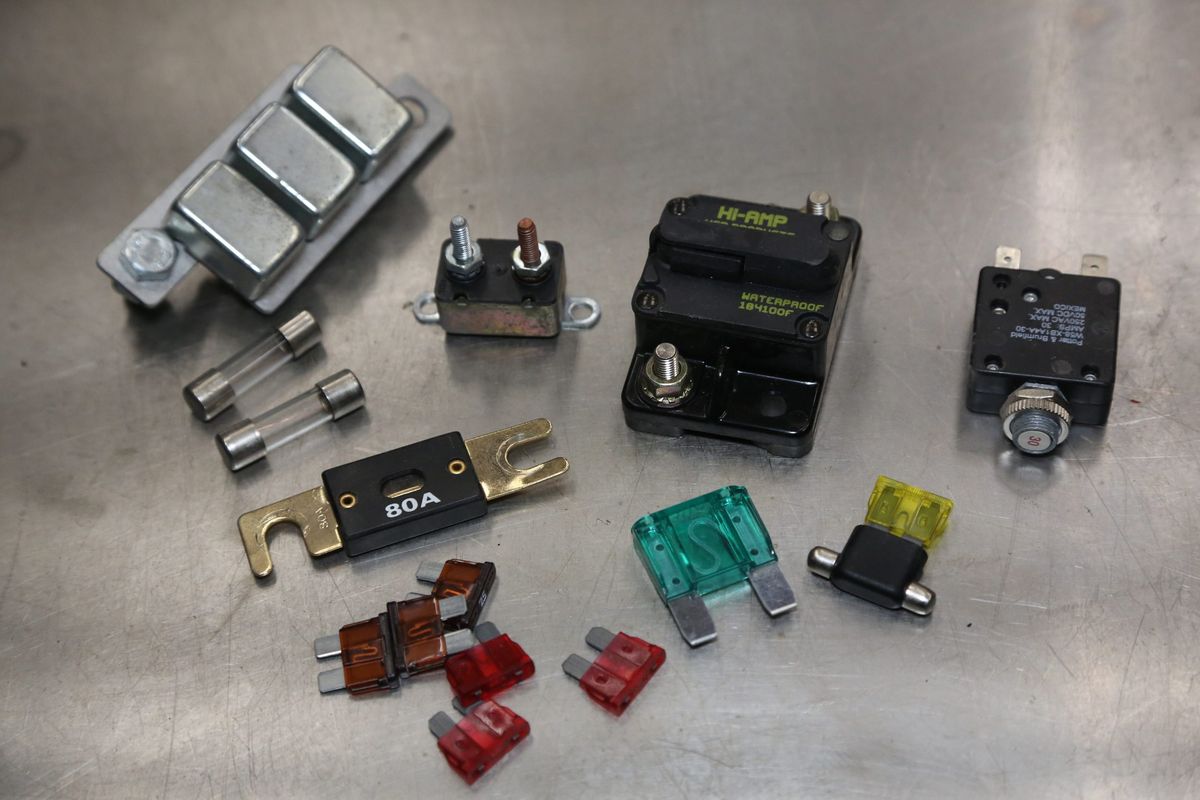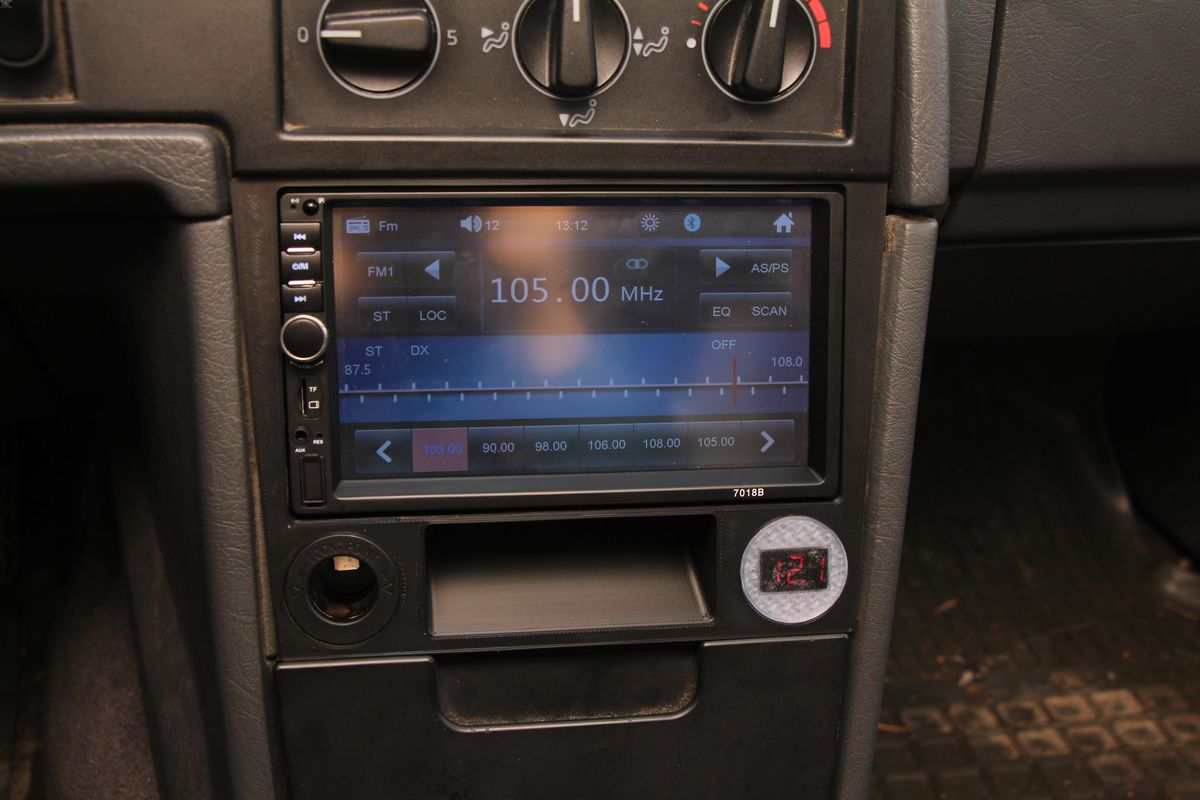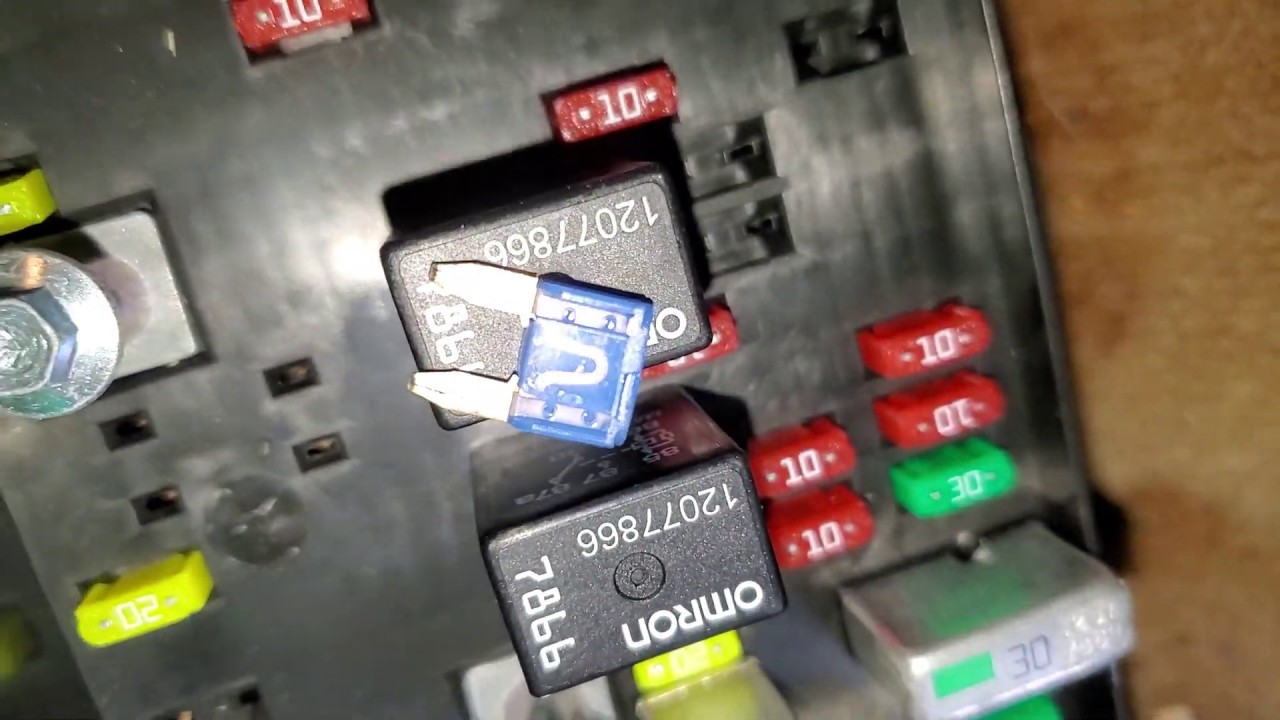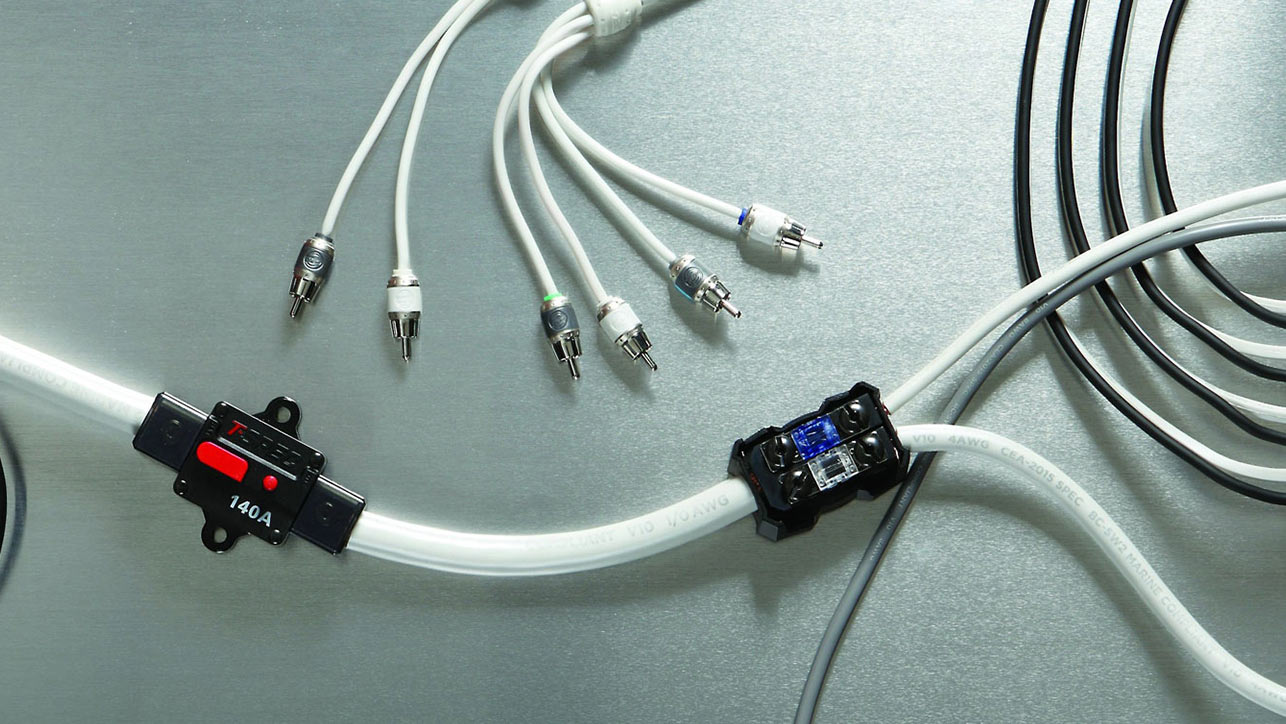Home>Production & Technology>Stereo>What Size Fuse For Car Stereo


Stereo
What Size Fuse For Car Stereo
Modified: January 22, 2024
Looking for the right fuse size for your car stereo? Discover the optimal fuse size for your stereo system to ensure optimal performance.
(Many of the links in this article redirect to a specific reviewed product. Your purchase of these products through affiliate links helps to generate commission for AudioLover.com, at no extra cost. Learn more)
Table of Contents
Introduction
Welcome to the world of car stereos, where music accompanies us on our road trips and daily commutes. Whether you are a music aficionado or simply enjoy listening to your favorite tunes while driving, having a high-quality car stereo is essential for an enjoyable audio experience on the road.
But have you ever wondered about the importance of fuses in your car stereo system? Fuses are vital components that protect your car stereo and other electrical devices from damage caused by power surges or short circuits. They act as a safeguard, preventing excessive current from flowing through the delicate circuits of your stereo system.
Choosing the right fuse size for your car stereo is crucial to ensure the proper functioning and longevity of your system. In this article, we will explore the factors to consider when selecting a fuse size, along with the steps to calculate the appropriate size for your car stereo.
Furthermore, we will discuss common fuse sizes utilized in car stereos and provide guidance on how to choose the best fuse for your specific audio setup. So, buckle up and let’s dive into the world of car stereo fuses!
Understanding Car Stereo Fuses
Before we delve into the details of choosing the right fuse for your car stereo, it’s important to understand the basic functioning of car stereo fuses. Fuses are designed to protect electrical circuits from overloading and prevent damage to the connected devices.
In the context of car stereos, fuses serve as a protective measure for the audio system. They are located in the fuse box or fuse panel of your vehicle and are typically labeled with the amp rating. The amp rating indicates the maximum amount of current that the fuse can handle before it blows.
When an electrical fault occurs, such as a short circuit or excess current draw, the fuse acts as a sacrificial component. It will melt or blow, interrupting the flow of electricity to the circuit and preventing damage to the car stereo or other connected devices.
Car stereo fuses come in different sizes and ratings, ranging from a few amps to several hundred amps. It is essential to select the proper fuse size based on the power requirements of your specific car stereo system. Using a fuse with the incorrect amp rating can either result in a blown fuse due to excessive current or, worse, damage the car stereo itself.
It’s worth noting that the fuse rating should be based on the power requirements of the entire car stereo system, including the head unit, amplifiers, and speakers. Therefore, it is crucial to consider the total power consumption and the wiring configuration when choosing the appropriate fuse size.
Now that we have a basic understanding of car stereo fuses, let’s move on to explore the factors to consider when selecting the right fuse size for your car stereo system.
Factors to Consider When Choosing a Fuse for a Car Stereo
When selecting a fuse for your car stereo, there are several factors to consider to ensure the optimal performance and protection of your audio system. These factors include:
- Power Requirements: The power rating of your car stereo system, including the head unit, amplifier(s), and speakers, is a crucial factor to consider. Each component will have a specific power requirement, usually measured in watts. You should add up the power ratings of all the components to determine the total power consumption of your system.
- Wiring Configuration: The wiring configuration of your car stereo system can impact the selection of the appropriate fuse size. If you have multiple amplifiers or other high-power components, you may require thicker gauge power wire. Thicker wire can handle more current and may necessitate a higher amp rating for the fuse.
- Fuse Box Capacity: It is essential to check the capacity of your vehicle’s fuse box or fuse panel. The fuse box has a maximum current capacity, and exceeding this capacity can lead to electrical issues and potential damage. Make sure your selected fuse size does not exceed the maximum allowable current for the fuse box.
- Fuse Type: Car stereo fuses come in different types, including blade fuses and mini fuses. Ensure that you choose the correct fuse type that is compatible with your vehicle’s fuse box. It is also important to note that different fuse types may have different amp ratings, so double-check the rating before purchasing.
- Consider Future Upgrades: If you plan to upgrade your car stereo system in the future by adding more components or increasing the power output, it is a good idea to choose a fuse with a slightly higher amp rating to accommodate the potential future upgrades.
By considering these factors, you can determine the appropriate fuse size for your car stereo system. Next, we will explore the steps to calculate the recommended fuse size for your specific audio setup.
Determining the Recommended Fuse Size for Your Car Stereo
Now that you understand the factors to consider when choosing a fuse for your car stereo, it’s time to determine the recommended fuse size for your specific audio setup. By following these steps, you can accurately calculate the appropriate fuse size:
- Identify the Power Requirements: Determine the power ratings of all the components in your car stereo system, including the head unit, amplifiers, and speakers. This information is usually listed in the product specifications or user manuals. Add up the power ratings to get the total power consumption of your system.
- Convert Watts to Amperes: The fuse ratings are typically expressed in amperes (A), while the power ratings of the components are stated in watts (W). To convert watts to amperes, use the formula: amperes = watts / voltage. Most car audio systems operate on a 12-volt electrical system, so divide the power rating by 12 to get the amperes.
- Consider Safety Margin: To ensure a stable and reliable power supply, it is advisable to add a safety margin to the calculated amperes. This margin accounts for any spikes in power demand that may occur during intense musical passages. Adding a 15-20% safety margin is typically recommended.
- Round Up to the Nearest Fuse Size: Once you have the amperes with the safety margin, round up to the nearest available fuse size. It is always better to choose a slightly higher amp rating rather than risk using a fuse that is too small and blowing it frequently.
By following these steps, you can accurately determine the recommended fuse size for your car stereo system. However, it is important to note that these calculations are based on the assumption of a typical setup. If you have a complex or customized car stereo system, it may be best to consult a professional installer for precise recommendations.
Now that you know how to calculate the recommended fuse size, let’s explore some common fuse sizes used in car stereos and discuss how to choose the right fuse for your specific audio system.
Steps to Calculate the Fuse Size for Your Car Stereo
Calculating the appropriate fuse size for your car stereo involves a few simple steps. By following these steps, you can ensure that your audio system is protected and operates optimally:
- Identify Power Requirements: Determine the power ratings of all the components in your car stereo system, including the head unit, amplifiers, and speakers. Note the power consumption in watts for each component.
- Convert Watts to Amperes: To determine the current draw, you need to convert the power ratings from watts (W) to amperes (A). Divide the wattage by the system voltage, typically 12 volts for car audio systems, to obtain the amperes. For example, if your amplifier is rated at 100 watts, the calculation would be 100W / 12V = 8.33A.
- Add Safety Margin: To ensure reliable and stable power delivery, it is recommended to add a safety margin to the calculated amperes. Increasing the fuse size by 15-20% provides a buffer for power spikes or fluctuations. For instance, if the calculated current draw is 8.33A, adding a 20% safety margin would result in a fuse size of 10A.
- Round Up to Nearest Fuse Size: Once you have determined the fuse size with the safety margin, round up to the nearest available fuse size. It is always better to use a slightly higher amp-rated fuse rather than risking using a fuse that is too small and blowing frequently. In this example, you would round up to the nearest available fuse size, such as a 15A fuse.
Remember, these steps provide a general guideline for calculating the fuse size for your car stereo system. It is crucial to refer to the product manuals and specifications of your components to ensure accuracy. Additionally, if you have a complex or custom audio setup, it is advisable to consult a professional installer who can provide expert recommendations.
Now that you know how to calculate the fuse size, let’s explore some common fuse sizes used in car stereos and discuss how to choose the right fuse for your specific audio system.
Common Fuse Sizes for Car Stereos
When it comes to choosing a fuse for your car stereo, there are several common fuse sizes that are widely used in car audio systems. These fuse sizes are typically available in most automotive stores and online retailers. Here are some of the common fuse sizes for car stereos:
- Mini Blade Fuses: Mini blade fuses, also known as ATO or ATC fuses, are one of the most commonly used fuse sizes in car stereos. They are compact and come in various amp ratings, such as 5A, 10A, 15A, 20A, and 30A. These fuses are often used for low to moderate power applications.
- Standard Blade Fuses: Standard blade fuses, also known as ATO or ATC fuses, are larger than mini blade fuses and are typically used for higher-powered audio systems. They are available in amp ratings ranging from 15A to 100A, making them suitable for a wide range of applications.
- Maxi Blade Fuses: Maxi blade fuses offer a higher amp rating range, usually from 20A to 100A. They are larger in size and are commonly used for amplifiers and other high-power devices in car audio systems.
- MIDI Fuses: MIDI fuses are larger fuses commonly used in high-powered car audio systems. They are available in amp ratings ranging from 30A to 200A, making them suitable for applications that require a significant amount of current.
- ANL Fuses: ANL fuses, or non-time delay fuses, are popular in high-performance car audio systems. They are available in amp ratings ranging from 80A to 500A and are often used to protect amplifiers and power distribution systems.
When choosing the right fuse size for your car stereo system, consider the power requirements and the amp ratings of the components. It is crucial to select a fuse that can handle the maximum current drawn by your system while providing a safety margin.
Always refer to the manufacturer’s specifications and guidelines for your car stereo components to ensure you choose a fuse size that is compatible and appropriately rated for your system’s power needs. If you are unsure or have a complex setup, consult a professional installer for expert advice and recommendations.
Now that we have explored the common fuse sizes, let’s discuss some tips for choosing the right fuse for your car stereo system.
Choosing the Right Fuse for Your Car Stereo
Choosing the right fuse for your car stereo is crucial to ensure optimal performance and protection of your audio system. Here are some tips to help you select the appropriate fuse:
- Refer to Manufacturer’s Specifications: Check the specifications and guidelines provided by the manufacturers of your car stereo components. They often recommend specific fuse sizes and amp ratings that are compatible with their products. Following these recommendations ensures that you are using the right fuse for your system.
- Consider the Power Requirements: Take into account the power requirements of your car stereo system, including the head unit, amplifiers, and speakers. Calculate the total power consumption and use that information to determine the appropriate fuse size based on the amperage needed.
- Consider Future Upgrades: If you plan to upgrade your car stereo system in the future by adding more powerful components, consider choosing a fuse with a slightly higher amp rating to accommodate these upgrades. This ensures that your fuse can handle the increased power requirements without blowing frequently.
- Consult a Professional Installer: If you are unsure about which fuse size to choose or have a complex car stereo setup, it is highly recommended to consult a professional installer. They have the expertise and experience to assess your system’s power needs and recommend the appropriate fuse size to ensure the best performance and protection.
- Consider Fuse Quality: Opt for high-quality fuses from reputable manufacturers. Cheap or generic fuses may not provide reliable protection and could potentially fail to prevent electrical damage. Investing in quality fuses can save you from potential system failures and costly repairs in the long run.
- Ensure Proper Fuse Installation: When installing the fuse, make sure it is properly seated in the fuse holder and secured tightly. Loose or incorrectly installed fuses can cause intermittent power issues or even damage your car stereo system.
Remember, the proper fuse size is critical for the safety and performance of your car stereo system. Taking the time to select the right fuse will help protect your components from damage and maintain optimal audio quality.
By considering the manufacturer’s specifications, power requirements, and seeking professional advice, you can confidently choose the right fuse for your car stereo system. Now that you are equipped with the knowledge to choose the right fuse, you can enjoy your favorite tunes on the road with peace of mind.
If you need any further assistance or have specific questions about fuse sizes for your car stereo, feel free to reach out to us.
Conclusion
Choosing the right fuse for your car stereo is essential for the proper functioning and protection of your audio system. Fuses act as a crucial safeguard against power surges and electrical faults, preventing damage to your car stereo components.
When selecting a fuse, consider factors such as the power requirements of your car stereo system, the wiring configuration, and the capacity of your vehicle’s fuse box. By following the steps to calculate the recommended fuse size, you can ensure that your fuse can handle the current draw of your system and provide a safety margin for stable power delivery.
Common fuse sizes for car stereos include mini blade fuses, standard blade fuses, maxi blade fuses, MIDI fuses, and ANL fuses. Choosing the appropriate fuse size based on your system’s power requirements and the manufacturer’s recommendations is crucial for optimal performance.
If you are unsure about the right fuse size or have a complex setup, it is advisable to consult a professional installer who can provide expert guidance. They have the knowledge and experience to assess your system’s needs and recommend the most suitable fuse for your specific audio setup.
Remember to always use high-quality fuses from reputable manufacturers and ensure proper installation in the fuse holder. This will help maintain the integrity of your car stereo system and protect it from potential electrical damage.
By considering the factors discussed in this article and making an informed decision, you can ensure the optimal performance and longevity of your car stereo system. So, go ahead and enjoy your favorite music on the road, knowing that your car stereo is protected by the right fuse.











